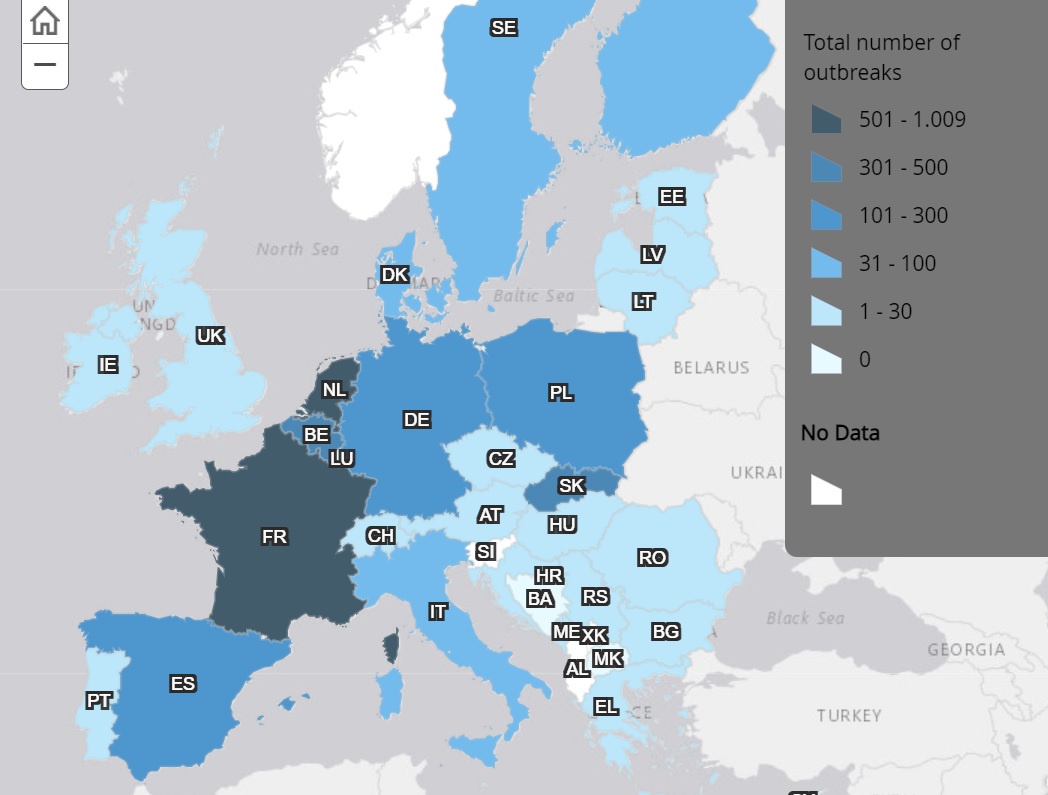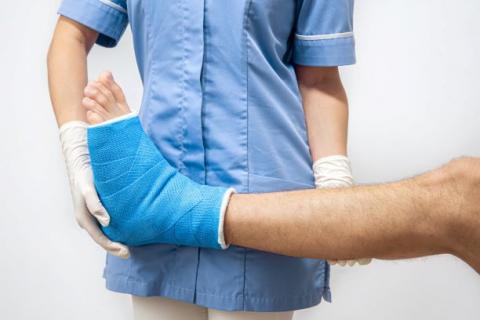What is food poisoning?
First of all, it must be differentiated from "something that must have upset me". Food poisoning is an illness caused by the ingestion of food containing pathogenic germs or their toxins, viruses or parasites, as explained by the Spanish Society of Endocrinology and Nutrition (SEEN) in a press release.
The disease can originate from the ingestion of bacteria or viruses in the food (infection), from toxins produced by those previously formed in the food (intoxication), or from parasitic forms in specific phases of their evolutionary cycle (infestation), according to the Spanish Agency for Food Safety and Nutrition (AESAN).
Examples include salmonellosis and hepatitis A, botulism and gastroenteritis. The European Food Safety Authority (EFSA) warns that foodborne zoonotic diseases "are a major and widespread threat to global public health".
What are the most common and what is their incidence?
According to EFSA, more than 350,000 cases are reported in the EU each year and the actual number is likely to be higher. Campylobacteriosis (a disease with gastrointestinal symptoms) was the most reported zoonosis in the EU in 2020, with almost 121,000 cases compared to more than 220,000 cases the previous year. It was followed by salmonellosis, which affected more than 52,000 people, compared to 88,000 in 2019. The number of reported food-borne outbreaks also decreased by 47%, according to the annual EU zoonoses report One Health, produced by EFSA and the European Centre for Disease Prevention and Control (ECDC).
The cause of this decline, according to experts from both agencies, is the covid-19 pandemic. Travel and event restrictions, restaurant closures, quarantines, containment and other measures such as the use of masks, physical distancing and hand disinfection were all measures that had a positive impact on the decline in food poisoning.
A total of 3,086 foodborne outbreaks were reported in 2020, which can be viewed on an interactive EFSA map. Salmonella remained the most frequently detected agent, causing around 23% of outbreaks. The most frequent sources were eggs, egg products and pigmeat.

What are the symptoms?
The most common symptoms are nausea, vomiting, diarrhoea, abdominal pain and cramps, and sometimes fever.
How are they treated and are they serious?
In most cases, food poisoning is mild and disappears without treatment, although some people need to go to hospital. The SEEN recommends consulting a doctor when there are warning signs such as frequent episodes of vomiting and inability to tolerate liquids, vomiting or bloody stools, diarrhoea for more than three days, extreme pain or severe abdominal cramps, fever (temperature above 38 °C), signs or symptoms of dehydration (excessive thirst, dry mouth, little or no urine, severe weakness, dizziness or lightheadedness).
If home treatment is needed, Ana Isabel Sánchez Marcos, member of the SEEN Nutrition Department, points out that it usually consists of replacing lost fluids or antibiotics, in some cases. The endocrinologist warns against taking anti-diarrhoeal drugs without a doctor's prescription, as they can aggravate the condition.
10 recommendations to avoid them
AESAN recommends the following rules, based on the World Health Organisation's "Golden Rules" for hygienic food preparation.
- Consume food that has been treated or handled hygienically: raw milk should not be consumed without prior heat treatment. Meat, fish and bakery products should be refrigerated or frozen.
- Cook food of animal origin correctly: food can be contaminated by micro-organisms, which can be destroyed by heat. The temperature to which the food should be subjected should be sufficient to bring the food to a minimum of 70 °C in the middle for at least two minutes.
- Consume food immediately after cooking: avoid leaving cooked food at room temperature so that germs do not proliferate.
- Store cooked food correctly: food that cannot be eaten immediately or leftovers that are to be stored should be kept at a temperature above 60 °C or at a temperature of not more than 5 °C.
- Keep cooked food sufficiently warm: food that can be kept warm until consumption (soups, purees, stews, etc.) can be kept warm. Other foods that cannot be heated (salads, gazpacho, etc.) should be refrigerated immediately.
- Avoid contact between raw and cooked food: cooked food can be re-contaminated by contact with raw food or with objects that have previously come into contact with raw food (knives, boards, surfaces, rags, etc.). It is preferable to use kitchen paper.
- Ensure proper hygiene of the food handler and adequate cleanliness of all kitchen surfaces.
- Keep food out of reach of insects, rodents and pets.
- Use only potable water.
- Do not consume perishable foods that are exposed to room temperature: in bars, cafeterias, restaurants, etc., all perishable foods must be protected by display cabinets and kept in adequate sanitary conditions.




